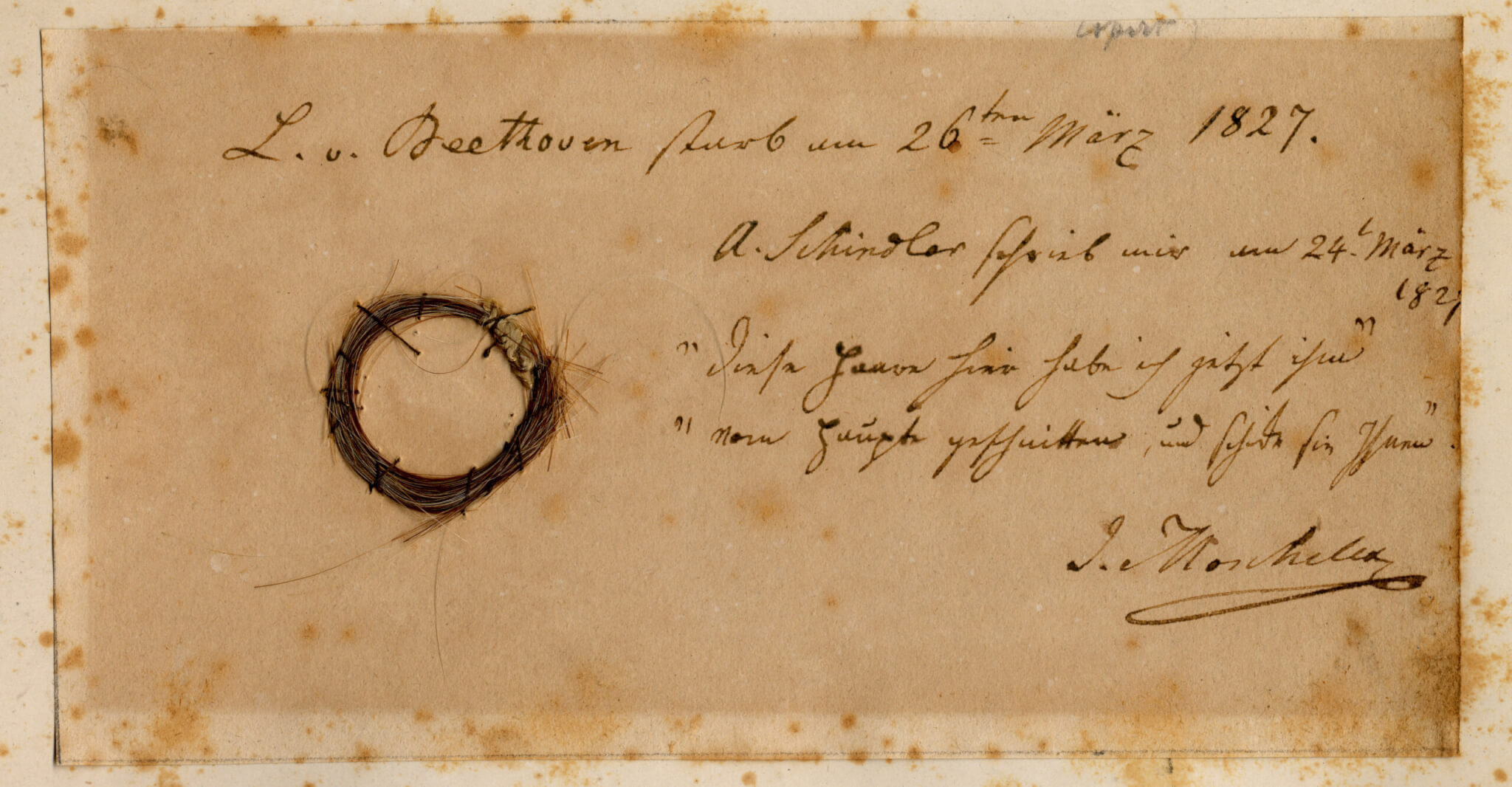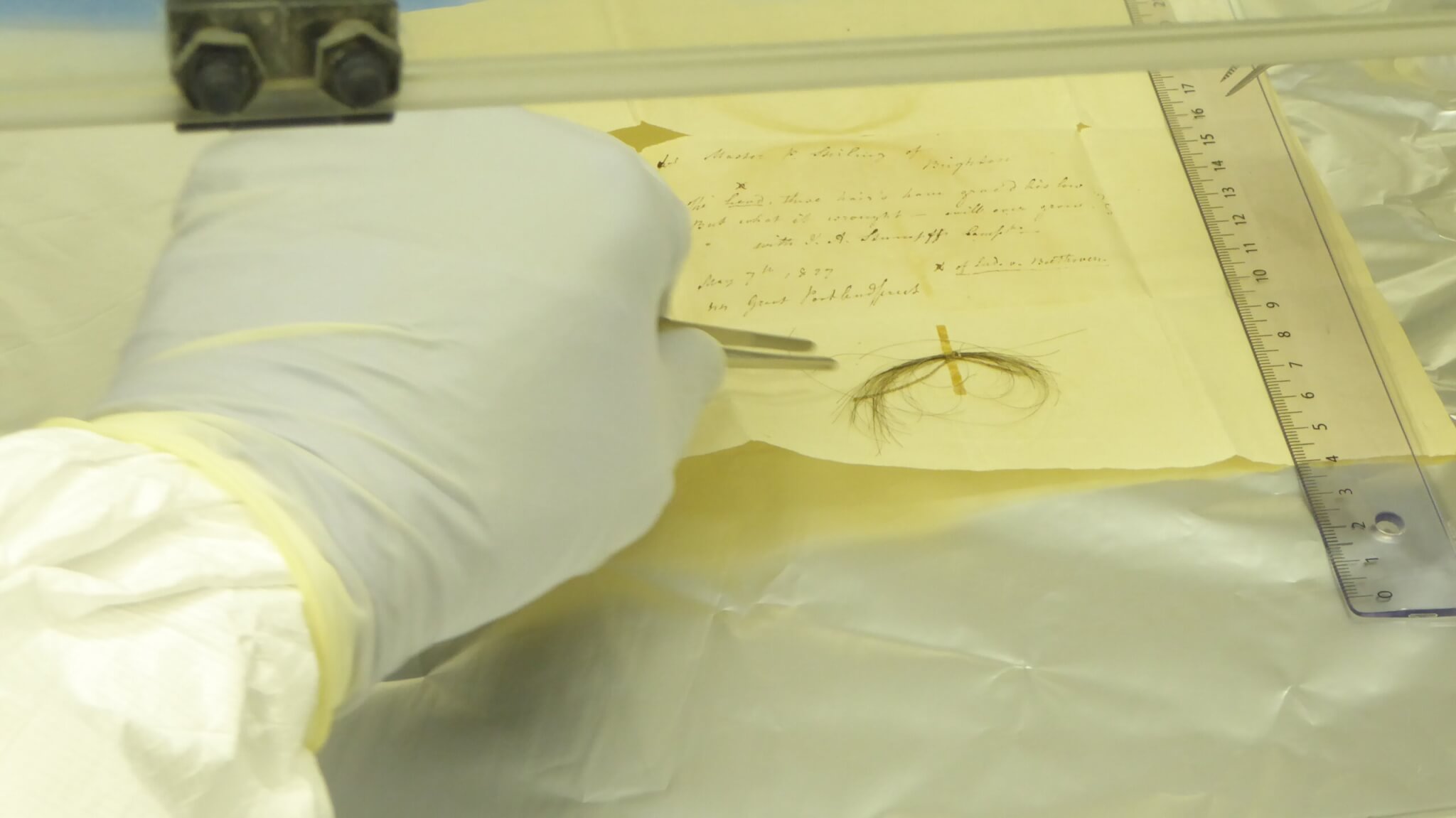LEIPZIG, Germany — Ludwig van Beethoven may have drunk himself to death, say scientists who mapped his genome from a lock of the great composer’s hair. Researchers discovered the musical genius, who became deaf as an adult, was predisposed to liver disease and infected with Hepatitis B.
Beethoven’s hair was studied by scientists at the Max Planck Institute of Evolutionary Anthropology in Germany. They believe that the two illnesses formed a lethal combination that worsened from his booze habit and might have ultimately finished him off.
“We can surmise from Beethoven’s ‘conversation books’, which he used during the last decade of his life, that his alcohol consumption was very regular, although it is difficult to estimate the volumes being consumed,” says lead author Tristan Begg, now with the University of Cambridge, in a statement. “While most of his contemporaries claim his consumption was moderate by early 19th century Viennese standards, there is not complete agreement among these sources, and this still likely amounted to quantities of alcohol known today to be harmful to the liver.
“If his alcohol consumption was sufficiently heavy over a long enough period of time,” adds Begg, “the interaction with his genetic risk factors presents one possible explanation for his cirrhosis.”
Beethoven’s unhealthy habits
Ludwig Van Beethoven was known to be fond of wine — downing up to a bottle with each meal. By the end of his life he was bedridden with a failing liver and pancreas, migraines and abdominal pain. He died during a thunderstorm on March 26, 1827 at just 56, after failed attempts by doctors to revive him with a spiked punch.
The study also suggests Beethoven’s hepatitis B infection fueled his severe liver disease, exacerbated by his booze intake and genetic risk. It did not reveal a simple genetic origin of his hearing loss.

“Although a clear genetic underpinning for Beethoven’s hearing loss could not be identified, the scientists caution that such a scenario cannot be strictly ruled out,” explains co-author Dr. Axel Schmidt, of the University Hospital of Bonn. “Reference data, which are mandatory to interpret individual genomes, are steadily improving. It is therefore possible Beethoven’s genome will reveal hints for the cause of his hearing loss in the future.”
It proved impossible to find a genetic explanation for Beethoven’s gastrointestinal complaints. But celiac disease and lactose intolerance are “highly unlikely”.
Beethoven was also found to have a certain degree of genetic protection against risk of irritable bowel syndrome (IBS), often suspected as a cause. “We cannot say definitely what killed Beethoven, but we can now at least confirm the presence of significant heritable risk, and an infection with hepatitis B virus,” notes co-author Johannes Krause. “We can also eliminate several other less plausible genetic causes.”
‘Pity, pity too late!’
Beethoven was a key figure in the transition between the classical and romantic eras. Among his most famous works are his Ninth Symphony, Moonlight Sonata and Fur Elise. He continued to compose after going deaf in 1816. After a publisher bought him 12 bottles of wine as a gift, the dying composer’s final words were: “Pity, pity, too late!”
Adds Mr. Begg: “Taken in view of the known medical history, it is highly likely that it was some combination of these three factors, including his alcohol consumption, acting in concert, but future research will have to clarify the extent to which each factor was involved.”
The researchers conducted authentication tests on eight hair samples acquired from public and private collections in the U.K., continental Europe and the U.S.
They discovered that at least two did not originate from Beethoven, including a famous one previously believed to have been cut from the recently deceased composer’s head by the 15-year-old musician Ferdinand Hiller. Earlier analyses supported the idea Beethoven had lead poisoning, a possible factor in his health complaints, including his hearing loss.
Professor William Meredith, a California based independent scientist who has been involved in analyses of Beethoven’s remains, helped initiate the present study. “Since we now know the ‘Hiller lock’ came from a woman and not Beethoven, none of the earlier analyses based solely on that lock apply to Beethoven,” he says. “Future studies to test for lead, opiates, and mercury must be based on authenticated samples.”

The five samples identified as being authentic and from the same person belong to the Ira F. Brilliant Center for Beethoven Studies in San Jose, California; to a private collector, American Beethoven Society member Kevin Brown, and to the Beethoven-Haus in Bonn.
Beethoven hand-delivered one of the locks, now in Brown’s collection, to the pianist Anton Halm in April 1826 telling him “That is my hair!” Beethoven’s whole genome was sequenced from another of Brown’s samples, the “Stumpff Lock,” which emerged as the best-preserved.
The team found the strongest connection between the DNA extracted from the Stumpff lock of Beethoven’s hair and people living in present day North Rhine-Westphalia – consistent with Beethoven’s known German ancestry.
The study is published in the journal Science Advances.
South West News Service writer Mark Waghorn contributed to this report.
